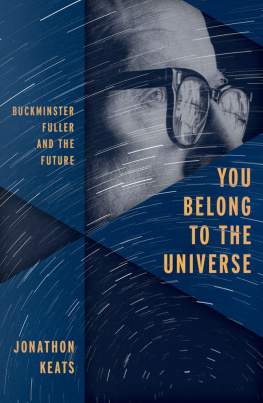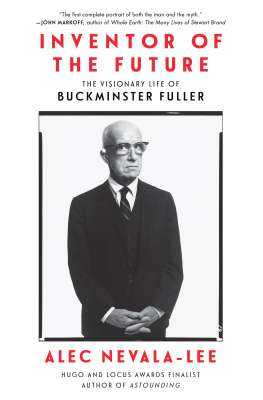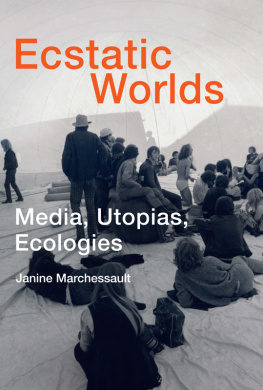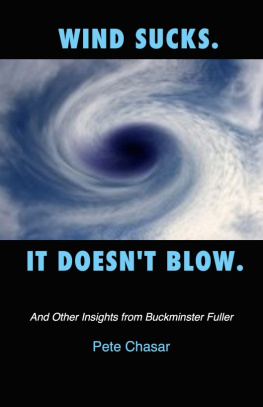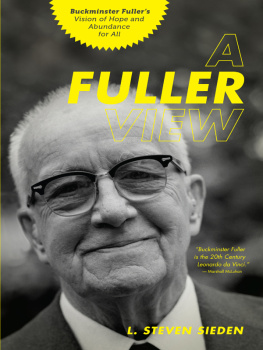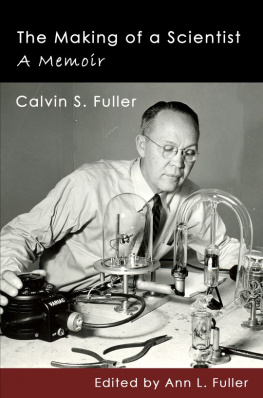YOU BELONG TO THE UNIVERSE

Oxford University Press is a department of the University of Oxford. It furthers the Universitys objective of excellence in research, scholarship, and education by publishing worldwide. Oxford is a registered trade mark of Oxford University Press in the UK and certain other countries.
Published in the United States of America by Oxford University Press
198 Madison Avenue, New York, NY 10016, United States of America.
Jonathon Keats 2016
All rights reserved. No part of this publication may be reproduced, stored in a retrieval system, or transmitted, in any form or by any means, without the prior permission in writing of Oxford University Press, or as expressly permitted by law, by license, or under terms agreed with the appropriate reproduction rights organization. Inquiries concerning reproduction outside the scope of the above should be sent to the Rights Department, Oxford University Press, at the address above.
You must not circulate this work in any other form and you must impose this same condition on any acquirer.
Library of Congress Cataloging-in-Publication Data
Keats, Jonathon, author.
You belong to the universe : buckminster fuller and the future / Jonathon Keats.
pages cm
Includes bibliographical references and index.
ISBN 9780199338238 (hardcover : alk. paper)eISBN 97801993382521.Fuller, R. Buckminster (Richard Buckminster), 18951983.2.ArchitectsUnited StatesBiography. 3.InventorsUnited StatesBiography.I.Title.
TA140.F9K43 2016
620.0092dc23
[B]
2015030656
For Silvia. Sempre, sempre.
CONTENTS
YOU BELONG TO THE UNIVERSE
I Epiphany
LATE ONE EVENING in the winter of 1927, Buckminster Fuller set out to kill himself in frigid Lake Michigan. At thirty-two years old, he was a failure. He had neither job prospects nor savings, and his wife had just given birth to a daughter. A life insurance policy, bought while he was in the Navy, was all that he had to support his family.
So Fuller walked down to a deserted stretch of shoreline on the North Side of Chicago. He looked out over the churning water and calculated how long hed need to swim before succumbing to hypothermia. But as he prepared to jump, he felt a strange resistance, as if he were being lifted, and he heard a stern voice inside his head: You do not have the right to eliminate yourself. You do not belong to you. You belong to the universe. Then the voice confided that his life had a purpose, which could be fulfilled only by sharing his mind with the world, and that his family would always be provided for, as long as he submitted to his calling.
He went home and told his wife. He explained that he no longer needed a job. He said that he had to think, and would not utter a word until he knew what he truly thought. For two full years, Fuller was silent. He filled five thousand pages with notes, as if in a trance. His jottings and sketches revealed the secret to making the whole human race successful for all eternity. He spent the rest of his life openly sharing the secret with everybody.
At least thats how he later characterized his 1927 transformation, addressing lecture halls crowded with disciples listening to his wisdom for seven or eight hours at a stretch. Sometimes he changed details, such as whether his daughter was born before or after his lakeside epiphany, or the number of years he was silent, or how many pages hed written. In interviews he might embellish his tale, claiming that hed slept just two hours each night, or had become a vegetarian, or had moved his family into a slum where the neighbor was an Al Capone henchmen. Such details could easily be adjusted because even the essentials of his tale were essentially invented.
Scrutinizing the copious records he kept of his lifea 45-ton archive that he dubbed the Dymaxion Chronofilescholars have found no evidence of a suicide attempt, or even a change in diet. Fuller did lose his job shortly after his daughter was born, but he found work within months. He became an asbestos flooring salesman, hardly a silent profession. Nonetheless, his files contain hundreds of pages of notes from the late 1920s, and the notes show that he was conceiving the philosophy and technology that would later mark his career as a self-proclaimed comprehensive anticipatory design scientist. During this periodas he started lecturing, and self-published his first bookhe also began the process of crafting a personal myth.
The myth became more elaborate with repetition. It also grew more important as a narrative that illustrated his ideas and revealed linkages, rendering his worldview more intelligible to the broad public he sought to convert. Given his ambition of making the entire human race successful for all eternity, comprehensive anticipatory design science necessarily drew on bodies of knowledge as disparate as architecture, cartography, biology, economics, and cosmology. His life story helped to unify these fields for his audience.
And also for himself. Every time he recounted his myth, Fuller reformulated his vision, combining his ideas differently with each variation. Self-mythologizing was his way of thinking. Autobiographical fraudulence afforded intellectual flexibility.
He was too priggish to admit it. He insisted that he was being completely forthright. Time and again, he advertised his openness by dramatically confessing his suicide attempt, and justified his candor by modestly describing himself as a human guinea pig. His life was an experiment to discover what the little, penniless, unknown individual might be able to do effectively on behalf of all humanity. The man whod stood on the shore of Lake Michigan could have been anyone. Everybody could succeed as he had done, if only they embraced his beliefs and belonged to the universe.
For all the factual inaccuracies, Fullers personal myth is his truest intellectual biography. Moreover, because theres no authoritative versionno consistency between tellingshis ideas remain as pliable today as when he was alive. His insights and innovations can be endlessly recombined and reimagined as global circumstances change. Revisiting his mythwith all its historical inaccuraciesis fundamental to reviving and renewing his thinking. For that reason, this book begins with a legendfoundational to the reconsideration of Fullers ideas and innovations in the chapters that follow. And the legend begins in 1895, in the old Massachusetts town of Milton.
II The Myth
BUCKY FULLER WAS an ungainly child. One leg was shorter than the other. Unlike his sister, he was cross-eyed and astigmatic. She talked about things he couldnt see, so he thought she was kidding. Not to be outdone, he conjured his own imaginary beings.
The grown-ups caught on in kindergarten, when a teacher asked him to make a house out of dried peas and toothpicks. He did it by touch. Instead of making a box, he built a series of interlocking tetrahedra. Their sturdiness, he reckoned, must make them the basis of all architecture. The grown-ups tried to set him straight by correcting his eyesight.
But his glasses did nothing to change his perspective. He stubbornly trusted his own experience over what people said. Why build houses as flimsy cubes, guided by tradition, when trial and error showed the strength of tetrahedra? In fact, Bucky was baffled by most of what grown-ups believed. He was particularly mystified in math classes, where teachers talked in unfathomably abstract terms. Hed raise his hand when an instructor drew geometric figures on the blackboard. Hed ask what triangles were made of and how heavy squares were. Hed inquire about their temperature. His teachers accused him of insubordination, but his curiosity was perfectly earnest.

